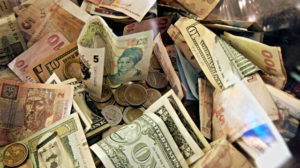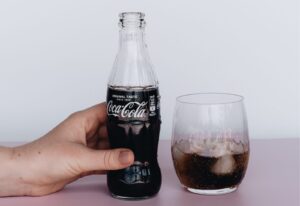Trademark symbols are the subject of regular questions from clients and even people with whom I have casual conversations, once they find out I am a trademark lawyer. In this post, I’ll briefly explain when it’s appropriate to use each symbol.
By the time you finish reading, you should be able to understand why I was somewhat surprised earlier today when I got this message while connecting to the internet at my hotel: “Thank you for being a Marriott Bonvoy™ member.”
Most readers are likely to be familiar with the circled R symbol, and the TM symbol is quite ubiquitous as well, but what do they actually mean? Trademark symbols identify the legal status of a brand name or logo. As a consumer, encountering these symbols can give you a sense of the brand’s established presence. As a business owner, these symbols can serve as important red flags that you ignore at your peril. If, for example, a competitor slaps a TM next to what you consider to be a generic term used in the industry, it’s probably a good idea to consult with a lawyer.
There are three main trademark symbols:
-
® (Registered Trademark): This circled R signifies the strongest form of trademark protection. In the United States, it means the trademark is officially registered with the U.S. Patent and Trademark Office (USPTO). Registration grants exclusive rights to the owner for using the trademark for specific goods or services. It is unlawful to use this symbol if the trademark is not registered. This includes trademarks that are the subject of a pending registration application. Other countries also use the circled R symbol, though the nuances associated with such use might differ from those in the United States.
-
TM (Trademark): This symbol indicates that the owner claims rights to the trademark, but the same is not registered with the USPTO. The TM symbol serves as a warning to potential trademark infringers that the owner intends to protect the mark. Given that the United States extends considerable protections to unregistered trademarks (at least in comparison to most other countries), use of the TM symbol constitutes a warning to others that might be using or thinking of using the trademark in question, despite the absence of registration. To be clear, use of the TM symbol doesn’t guarantee legal protection, but it can help establish trademark rights over unregistered trademarks (also known as common law trademarks). While this symbol is often used as a placeholder during the registration application process, it can be used even if the trademark is not the subject of a registration application (and even if there is no plan to apply for registration). The TM symbol is used in some other countries as well. Again, though, the legalities surrounding its use may differ from those in the United States.
-
SM (Service Mark): This symbol functions similarly to the TM symbol, but for service-based businesses. Think accounting firms, law offices, or consulting agencies. The SM symbol shows the owner claims rights to a logo or slogan associated with a service. Just as the term “trademark” has come to encompass both trademarks (which technically are marks used in connection to physical goods) and service marks, the TM symbol is also used to identify marks that are technically service marks.
When should you use these symbols?
If you’re a business owner, using the TM or SM symbol can be a good idea for any trademarks that you have not yet registered, or which you don’t plan to register for whatever reason (which, as discussed above, may be eligible for legal protection, regardless of their lack of registration). The TM or SM symbol puts others on notice of your claim and indicates your efforts to protect the trademark, which could be relevant in case of a dispute. If the trademark is later registered, you can switch to the ® symbol.
It is worth stressing that using the TM or SM symbol is not a substitute for registering your trademark. In addition to the reputational advantage that might be gained from going through the process of legally protecting your trademark, a trademark registration opens the door to important enforcement tools against trademark infringement, such as recordation of the trademark with Customs and Border Protection, and greater access to federal courts (as well as availability of more robust remedies if trademark infringement is found).
This all said, there are situations where a trademark cannot (or is unlikely to) be registered. For example, USPTO might refuse registration on the basis that your trademark is descriptive of the goods and/or services it identifies. In those cases, a TM symbol might be the second-best option.
By understanding these trademark symbols, you can navigate the brand landscape with a sharper eye, both as consumer and as a business owner.
Why is Marriott Using the TM Symbol next to Bonvoy?
A quick search of the USPTO register shows that Marriott has registered the MARRIOTT BONVOY trademark in connection to, among others, “incentive award programs.” In this case, the mark is clearly being used in connection to the Marriott Bonvoy incentive award program (since it is my membership in that program that is being acknowledged by Marriott’s message). Having gone through the trouble of registering the trademark, why isn’t Marriott fully availing itself of its legal rights?
Perhaps Marriott’s legal team is of the opinion that, somehow, Marriott’s use of the Bonvoy trademark on the internet landing page doesn’t constitute use of the mark in connection to its Marriott Bonvoy program. But that explanation doesn’t make sense. In fact, the specimen (a fancy name for proof of use) that Marriott presented to complete the registration of the trademark shows free wi-fi as one of the benefits of the program.
Looking around the Marriott website, I found other instances of the trademark being used with the TM symbol, such as “Marriott Bonvoy™ credit cards”. Again, the registration discussed above also identifies ” credit card services” as one of the services in connection to which the trademark is used. What’s going on?
It’s of course possible that Marriott’s lawyers know something I don’t, and perhaps they indicated to their marketing colleagues that the TM symbol should be used instead of the circled R. However, I suspect that the explanation is more banal.
One possibility is that the marketing folks want brand consistency: Changing the website is easy as 1, 2, 3, but Marriott may be stuck with printed materials (such as room key sleeves) that show the TM symbol. However, considering that the trademark was registered in 2020, and we’re almost halfway through its validity period, that explanation doesn’t really hold water either.
A more sensible explanation would be that a decision not to use the circled R was made for aesthetic reasons. After all, it’s not required to use any trademark symbol; competitor programs Hilton Honors (for the most part) and IHG One Rewards have opted to go symbol-less (with IHG often adding the circled R right after IHG). However, the fact that the TM symbol has been and continues to be used next to Marriott Bonvoy runs counter to this explanation, though aesthetic considerations might be a play; it might be deemed that the TM symbol looks better in these instances.
Finally, it is also possible that there is no legal or aesthetic reason behind the choice. Perhaps the folks who run the website and prepare marketing materials were not informed of the registration and the possibility of changing the symbol, or perhaps they were informed and didn’t take action for any reason. What do you think?
























